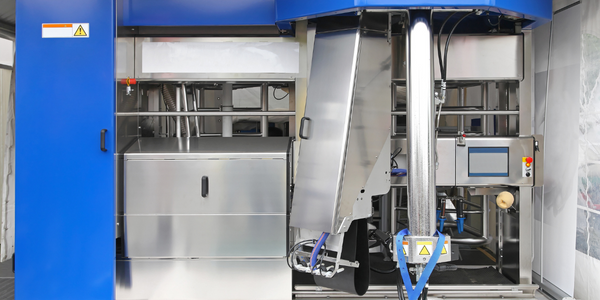Region
- Europe
Product
- CARTO Builder
- CARTO.js
- CARTOvl
- Airship
Tech Stack
- Artificial Intelligence
- Cloud Computing
- Geospatial Analysis
Implementation Scale
- Enterprise-wide Deployment
Impact Metrics
- Productivity Improvements
- Customer Satisfaction
Technology Category
- Platform as a Service (PaaS) - Data Management Platforms
- Analytics & Modeling - Real Time Analytics
Applicable Functions
- Business Operation
Use Cases
- Real-Time Location System (RTLS)
- Process Control & Optimization
Services
- Cloud Planning, Design & Implementation Services
- Software Design & Engineering Services
About The Customer
Tinsa Digital is a European proptech company, specializing in the use of Real Estate, economic, financial, and socio-demographic data. Focusing on the development of automatic models for asset valuation with Artificial Intelligence, they provide solutions to manage and visualize large volumes of assets and information relating to commercial and residential Real Estate. Tinsa Digital turned to CARTO seeking to develop a new application to differentiate their value proposition in the market, allowing them to bring large volumes of information in an intuitive way to business users and Real Estate analysts.
The Challenge
Tinsa Digital wanted to provide more powerful solutions that would allow their clients (Financial Institutions, Investment Funds and Real Estate agencies) to manage their portfolios in a more agile way - with more spatial insight. The solution needed to provide a series of indicators in relation to asset locations so that clients could see relevant segments using multiple layers of information in just a few clicks. Working with CARTO’s platform allowed Tinsa Digital to automate processes, such as the loading and visualization of information, generating a 'user-friendly' display, requiring no specialized training. This allowed these different divisions of their business to perform complex calculations, delivering results faster, as well as including different layers to complete Real Estate, financial, or geospatial analyses. This would allow them to create AOIs (Areas of Influence) correctly attributing values to different administrative regions, as well as optimizing their own geometries. The key challenges included: User management for large volumes of information, Flexibility and responsiveness when working alongside Tinsa Digital clients, Effective integration and automation of ETL processes.
The Solution
Working with CARTO’s platform allowed Tinsa Digital to automate processes, such as the loading and visualization of information, generating a 'user-friendly' display, requiring no specialized training. This allowed these different divisions of their business to perform complex calculations, delivering results faster, as well as including different layers to complete Real Estate, financial, or geospatial analyses. This would allow them to create AOIs (Areas of Influence) correctly attributing values to different administrative regions, as well as optimizing their own geometries. Tinsa Digital wanted to ensure the best usability and greatest customization capability in the market. Working with CARTO's stack allowed them, on the one hand, to prototype solutions in an agile way using CARTO Builder’s intuitive UI and, on the other hand, to develop an ad-hoc product for consulting clients using different development libraries such as CARTO.js, CARTOvl, and Airship. Another prerequisite for the development of the application was security. With CARTO it was possible to integrate the solution on-premise, guaranteeing data security in Tinsa Digital’s Cloud, without having to depend on third parties.
Operational Impact
Quantitative Benefit

Case Study missing?
Start adding your own!
Register with your work email and create a new case study profile for your business.
Related Case Studies.

Case Study
System 800xA at Indian Cement Plants
Chettinad Cement recognized that further efficiencies could be achieved in its cement manufacturing process. It looked to investing in comprehensive operational and control technologies to manage and derive productivity and energy efficiency gains from the assets on Line 2, their second plant in India.

Case Study
Airbus Soars with Wearable Technology
Building an Airbus aircraft involves complex manufacturing processes consisting of thousands of moving parts. Speed and accuracy are critical to business and competitive advantage. Improvements in both would have high impact on Airbus’ bottom line. Airbus wanted to help operators reduce the complexity of assembling cabin seats and decrease the time required to complete this task.

Case Study
Leading Tools Manufacturer Transforms Operations with IoT
Stanley Black & Decker required transparency of real-time overall equipment effectiveness and line productivity to reduce production line change over time.The goal was to to improve production to schedule, reduce actual labor costs and understanding the effects of shift changes and resource shifts from line to line.

Case Study
Improving Production Line Efficiency with Ethernet Micro RTU Controller
Moxa was asked to provide a connectivity solution for one of the world's leading cosmetics companies. This multinational corporation, with retail presence in 130 countries, 23 global braches, and over 66,000 employees, sought to improve the efficiency of their production process by migrating from manual monitoring to an automatic productivity monitoring system. The production line was being monitored by ABB Real-TPI, a factory information system that offers data collection and analysis to improve plant efficiency. Due to software limitations, the customer needed an OPC server and a corresponding I/O solution to collect data from additional sensor devices for the Real-TPI system. The goal is to enable the factory information system to more thoroughly collect data from every corner of the production line. This will improve its ability to measure Overall Equipment Effectiveness (OEE) and translate into increased production efficiencies. System Requirements • Instant status updates while still consuming minimal bandwidth to relieve strain on limited factory networks • Interoperable with ABB Real-TPI • Small form factor appropriate for deployment where space is scarce • Remote software management and configuration to simplify operations









